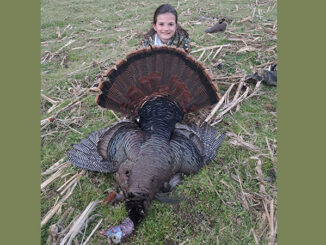
Returning wild fish to streams protects fisheries
More and more people are taking up the fine sport of trout fishing, but unfortunately, we aren’t adding new trout streams or growing more trout. Even remote, backcountry trout streams are getting more fishing pressure than ever.
Size limits and creel limits, even when rigidly enforced, only help slow the depletion of trout in streams that receive the brunt of fishing pressure because of easy access. If we want to continue to have quality trout fishing for this and future generations, we must assume responsibility for these precious resources and help them survive. Other than applying stricter harvest regulations, the most-effective method of preserving the resource is for more anglers to voluntarily practice catch-and-release.
For catch-and-release to work, however, it must be done properly. You can’t horse a trout to the bank, drag it over rocks and sand, jerk the hook out of its mouth, keep it out of water for an inordinate amount of time and expect it to survive when you finally place it back in the stream. If you fish that way, you may as well stick the trout in your creel; it has about the same chances of surviving.
Jerry L. West, a former biology professor at Western Carolina University in Cullowhee, N.C., said studies show that trout definitely undergo physiological changes when they are hooked.
“Their stress hormones shoot up, and their blood sugar increases,” he said.
The longer the trout is kept on the line, the more it is adversely affected by these physiological changes. To reduce stress on a fish, keep fight time to a minimum and return the fish to the water as quickly as possible.
Biologists suggest using a net only when it’s absolutely necessary. The ideal situation would be to never touch the trout, but to keep it in the water and gently remove the hook with forceps or needle-nose pliers.
If you must handle a trout, wet your hands first or use a special glove designed for handling trout. A trout’s protective slime covering can easily be disturbed by dry hands or a net.
Proper handling of fish also is important. Don’t hold it head up, gently cradle it in your hands, taking care not to squeeze the throat or body cavity — which can damage vital organs. Keep your fingers away from the gills. To minimize wiggling, hold the trout upside down. It usually will remain still enough for you to remove the hook.
Sometimes, even a careful angler will hook a trout deep in the throat or deep in its flesh. If it’s apparent that you won’t be able to easily remove the hook, biologists recommend snipping the line close to the hook and then releasing the trout, rather than risk further injury to the trout by trying to remove the imbedded hook. If you leave the hook in the trout, the hook will eventually work its way out.
When you’re ready to return the fish to the water, grasp it gently, point its head into the current, make sure the gills are working properly, and let the fish swim out of your hands. If the fish is exhausted after a prolonged fight, you may have to move it to quiet water to revive it.
Occasionally, no matter how hard you try not to, you might kill or severely injure a trout. If you’re on a stream that allows harvest, that would be a good time to keep a fish, but if you’re on a catch-and-release stream, leave the trout in the water. Nature will take care of it.
Catch-and-release does not have to be applied to all streams, of course. North Carolina and South Carolina have numerous streams that are regularly stocked with hatchery-raised trout, and these streams have generous creel limits and no size or lure restrictions. Catch your supper in these streams and enjoy it guilt-free. The streams that need our consideration are, first, our native brook trout streams, and second, our wild brown and rainbow trout streams. No wild brook trout should ever be killed — they’re too beautiful, and they’re our only true native salmonid. As for keeping brown or rainbow trout, think of the consequences before you put anything in your creel. If every angler takes a limit home, how long will the resource last?
West said he has no doubt that fishing pressure affects trout populations, especially brook trout.
“If you closed a stream to fishing, it would eventually be full of fish,” he said.
We can have our wild fish and protect them, too, by practicing catch-and-release.







Be the first to comment